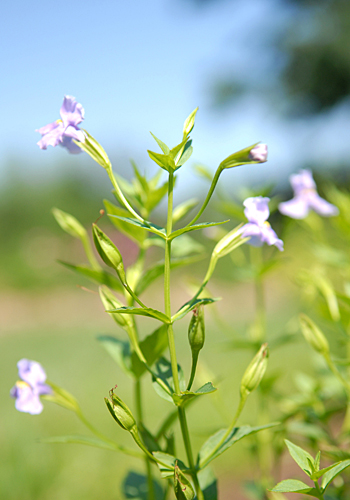When they think of flowering plants, most gardeners tend to think spring and early summer. But some off Delaware's most attractive perennials are just starting to show their colors now.
“There are a number of native perennials that put on their most vibrant display of color from late summer into fall,” says Sue Barton, Cooperative Extension specialist for ornamental horticulture.
“Change is an important component of landscape design. I've planned my home garden so that there is always something new going on. For example, a stand of cutleaf coneflower outside my garden shed is just starting to flower. The yellow flowers pop out amidst the green backdrop of the August garden.”
Many gardeners don't think about late-season color when planning their landscape and Barton has a hunch as to why this is. “When they're at the garden store, people tend to buy what's in bloom. And most people do their buying--and planting--early in the season. So a lot of wonderful late-blooming perennials tend to get overlooked by the average home gardener,” she says.
Featured plants will include Aster puniceus, a late-bloomer with light violet blue flowers that butterflies go crazy for; Hibiscus coccineus, a hardy hibiscus with scarlet blooms; and several coneflowers, including cutleaf and sweet. The cutleaf features droopy yellow petals and greenish-yellow centers; the sweet coneflower also is yellow but with an anise scent.
And if unique is what you're after, check out Allegheny monkey flower, a delicate-looking perennial that grows on the banks of streams and in swamps. Seldom found at nurseries and garden stores, the native monkey flower will be available in limited quantities at the UDBG sale.
UDBG is a good source of inspiration for gardeners seeking late-summer color. “Plants in bloom now include summer phlox, coneflower, sunflower, butterfly weed, blue vervain, ironweed, Indian pink, asters and silphiums,” says Melinda Zoehrer, assistant garden director. “In the native garden, a cultivar of Joe Pye weed called Bartered Bride is attracting butterflies with its pure white flowers. Nearby is a gorgeous sweep of ruby-colored Joe Pye weed called Eupatorium dubium 'Little Joe'.”
Late bloomers tend to be the Jolly Green Giants of the horticultural world. Many (but not all) late-flowering perennials grow to six or seven feet--or more. “In the wild, the common sunflower rarely grows more than five feet but in fertile soil it can reach heights up to 10 feet,” says Barton. “And certain cultivars of Joe Pye Weed can grow 8 to 10 feet in sunny conditions in moist, fertile soil.”
Height is an important part of the perennial garden, says Barton, but keep in mind that bigger isn't always better. “Some of the taller perennials can flop over if they aren't staked,” she says. “Whether or not you'll need to stake depends on the particular cultivar, on the fertility of the soil and even on the amount of rain. In a dry year, you may not have to stake your sunflowers but in a wet year, staking could be a must.”
Some of the plants available at the Florabundance Sale, such as Eupatorium dubium 'Little Joe,' have been specially bred to be smaller than average. At 4 to 5 feet, 'Little Joe' is half the size of most cultivars of Joe Pye weed.
The sale is sponsored by the UDBG Friends, a volunteer organization that works to further the development of the UDBG. For more info, go to [http://ag.udel.edu/udbg/events/annualsale.html].
Article by Margo McDonough
Photo by Danielle Quigley


